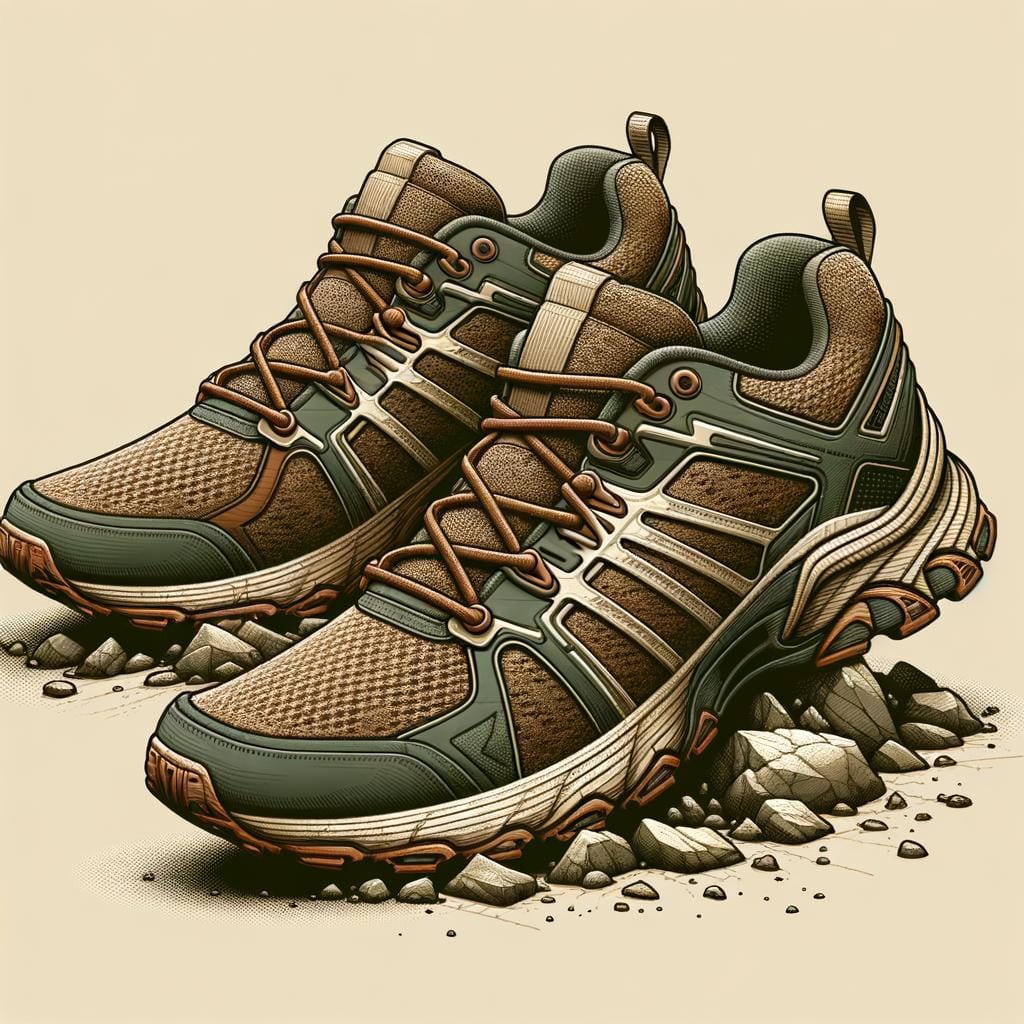Cross country running, often referred to as cross country or XC running, is a sport with a rich history that dates back to ancient times. Originating from endurance tests and military training exercises, cross country running has evolved into a competitive sport enjoyed by runners of all ages around the world. From the early days of running across fields and rough terrain to modern organized races, the sport has seen significant changes and developments over the years.
In the early stages of cross country running, athletes would navigate through various types of landscapes, testing their endurance and stamina in challenging conditions. As the sport grew in popularity, organized competitions were established, leading to the formation of official rules and regulations. Today, cross country running is recognized as a legitimate athletic event with scheduled races at local, national, and international levels.
The evolution of cross country running has not only shaped the physical aspects of the sport but also highlighted its numerous benefits for participants. From improving cardiovascular health and building muscular strength to enhancing mental resilience and emotional well-being, cross country running offers a holistic approach to fitness and wellness.
In this section, we will delve into the history of cross country running, tracing its roots from ancient origins to the modern-day competitions that showcase both tradition and innovation in this enduring sport.
Benefits of Cross Country Running
Cross country running is a sport that offers a multitude of benefits for individuals looking to improve their physical, mental, and emotional well-being. One of the key advantages of this sport is its ability to enhance cardiovascular fitness.
The demanding nature of cross country courses, which often feature varying terrain and elevation changes, challenges runners to improve their endurance and stamina. Regular participation in cross country running can lead to a stronger heart, increased lung capacity, and improved overall cardiovascular health.
In addition to the physical benefits, cross country running also has a positive impact on mental well-being. Engaging in outdoor activities such as cross country running can help reduce stress levels and boost mood. The combination of fresh air, natural surroundings, and physical exertion can lead to an increase in endorphins – often referred to as the “feel-good” hormones. This can result in a sense of well-being and improved mental clarity for runners.
Furthermore, cross country running can provide emotional benefits by fostering a sense of camaraderie and community among participants. The team aspect of cross country racing encourages cooperation and support among teammates, creating a supportive environment for individuals to push themselves beyond their limits. The shared experiences of training together, competing in races, and overcoming challenges can build lasting friendships and create a strong sense of belonging within the cross country running community.
Essential Gear for Cross Country Runners
When it comes to cross country running, having the right gear can make a significant difference in your performance and overall experience. From shoes to apparel to accessories, each piece of gear plays a crucial role in ensuring that you are prepared for the challenges of off-road running. Here are some essential items that every cross country runner should consider adding to their arsenal:
- Running Shoes: Investing in a good pair of trail running shoes is essential for cross country runners. These shoes offer the necessary grip and stability to navigate through varying terrain such as mud, rocks, and uneven surfaces. Look for shoes with durable soles, water-resistant materials, and a snug fit to protect your feet during long runs.
- Apparel: Opt for moisture-wicking clothing that helps keep you dry and comfortable throughout your run. Consider wearing breathable tops, compression shorts or leggings, and lightweight jackets depending on the weather conditions. Dressing in layers can help you regulate your body temperature as you tackle different terrains.
- Accessories: In addition to shoes and apparel, there are a few key accessories that can enhance your cross country running experience. A hydration pack or belt will allow you to stay hydrated during longer runs without slowing down at water stations. Compression sleeves or socks can help improve circulation and reduce muscle fatigue, while a GPS watch can track your pace, distance, and elevation gain.
Having the right gear not only improves your performance but also minimizes the risk of injuries during cross country running. By investing in quality shoes, appropriate apparel, and useful accessories, you can focus on pushing yourself further and achieving new goals in this challenging yet rewarding sport.
Remember that every runner is unique, so take the time to find gear that suits your preferences and needs. Whether you’re a beginner just starting out or an experienced athlete looking to refine your equipment choices, making informed decisions about your gear will contribute to a more enjoyable and successful cross country running experience.
So lace up those trail shoes, dress for the elements, grab your accessories, and hit the trails with confidence as you embrace the spirit of cross country running.
Training Tips for Success in Cross Country Running
Cross country running is a demanding sport that requires a combination of endurance, strength, and speed to be successful. To excel in this sport, athletes need to incorporate a variety of training tips into their routine. Endurance is a key component of cross country running as athletes must be able to sustain a fast pace over long distances.
Long distance runs at a moderate pace are essential for building endurance and increasing aerobic capacity. It is also important to include interval training to improve speed and stamina.
Strength training is another crucial aspect of preparing for cross country running. Strong muscles help prevent injuries and improve overall performance on the trails. Incorporating exercises such as squats, lunges, planks, and hip strengthening routines can increase power and efficiency while running. Additionally, focusing on core strength can improve posture and stability during races.
Speed workouts are vital for honing the competitive edge needed in cross country running. Interval training, hill repeats, and tempo runs help improve overall race pace and finishing kick. These types of workouts not only build speed but also mental toughness by pushing runners out of their comfort zones. By incorporating variety into their training regimen, cross country runners can improve their overall performance and achieve their goals on race day.
| Aspect | Focus |
|---|---|
| Endurance | Incorporate long distance runs and interval training |
| Strength | Include muscle strengthening exercises for injury prevention |
| Speed | Implement interval training, hill repeats, and tempo runs for race pace improvement |
The Mental Toughness Required for Cross Country Running
Cross country running is not just a test of physical strength and endurance, but also a mental challenge that requires grit and determination. Whether navigating through uneven terrain or tackling steep hills, runners must push through mental barriers to reach their goals. The sport demands a level of mental toughness that goes beyond simply being fit and prepared physically. Athletes must learn to overcome challenges such as fatigue, self-doubt, and discomfort in order to excel in cross country running.
One key aspect of mental toughness in cross country running is the ability to push through pain. Running long distances at high intensities can lead to physical discomfort and muscle fatigue, but mentally strong runners are able to block out these sensations and continue moving forward.
They understand that pain is temporary and focus on their end goal, using strategies like self-talk or visualization to keep themselves motivated during tough moments in a race. Developing this resilience can be just as crucial as physical conditioning when it comes to achieving success in the sport.
In addition to overcoming physical pain, cross country runners often face mental challenges such as self-doubt, fear of failure, or performance anxiety. These negative thoughts can hinder performance and undermine confidence if left unchecked.
Mental toughness involves cultivating a positive mindset, building resilience against setbacks, and adopting strategies for managing stress under pressure. By developing these psychological skills alongside their physical training, runners can enhance their overall performance on race day and improve their ability to handle whatever obstacles come their way during a cross country competition.
Cross Country Running Nutrition
Cross country running is a demanding sport that requires not only physical strength and mental toughness but also proper nutrition to fuel the body for optimal performance. Whether you are a seasoned competitor or just starting out in the sport, understanding the importance of nutrition can make a significant difference in your performance on the trails.
The Role of Nutrition in Cross Country Running
Nutrition plays a crucial role in cross country running as it provides the necessary energy, nutrients, and hydration needed for endurance and recovery. Carbohydrates are the primary fuel source for runners as they provide quick energy for muscles during intense workouts and races. Including complex carbohydrates such as whole grains, fruits, and vegetables in your diet can help sustain energy levels throughout long runs.
Hydration Strategies for Cross Country Runners
Proper hydration is essential for maintaining performance and preventing dehydration during training sessions and races. It is important to drink an adequate amount of water before, during, and after running to replace fluids lost through sweat. Electrolytes such as sodium and potassium are also important for maintaining fluid balance and muscle function. Sports drinks or electrolyte tablets can be beneficial for longer runs or hot weather conditions to replenish these essential minerals.
Post-Run Recovery Nutrition
After a grueling cross country run, it is crucial to refuel your body with nutrients to aid in recovery and muscle repair. Consuming a balanced meal or snack with a combination of carbohydrates and protein within 30 minutes to an hour after exercise can help replenish glycogen stores, reduce muscle soreness, and promote better recovery.
Including sources of lean protein such as chicken, fish, tofu, or beans along with carbohydrates like brown rice, quinoa, or sweet potatoes can support muscle growth and repair after a tough workout. Remember that listening to your body’s hunger cues and fueling appropriately will ultimately optimize your performance as a cross country runner.
Injury Prevention and Recovery Strategies for Cross Country Runners
Cross country running is a physically demanding sport that requires endurance, strength, and mental toughness. As athletes push their bodies to the limit during training and competitions, the risk of injuries increases. That’s why it is crucial for cross country runners to prioritize injury prevention and recovery strategies to maintain their peak performance level.
To help prevent injuries and promote faster recovery, cross country runners can incorporate the following strategies into their training routine:
- Rest: Adequate rest is essential for allowing the body to recover from intense workouts and races. Cross country runners should make sure to schedule rest days into their training schedule to reduce the risk of overuse injuries.
- Stretching: Regular stretching before and after runs can help improve flexibility, reduce muscle tension, and decrease the likelihood of strains or sprains. Dynamic stretching before a run can help warm up muscles, while static stretching after a run can aid in muscle recovery.
- Rehabilitation: In the unfortunate event of an injury, proper rehabilitation is key to ensuring a full recovery. Cross country runners should work closely with healthcare professionals such as physical therapists or sports medicine specialists to create a personalized rehabilitation plan.
By incorporating these injury prevention and recovery strategies into their training regimen, cross country runners can minimize the risk of setbacks due to injuries and stay healthy throughout their competitive season. Prioritizing rest, stretching, and rehabilitation can help athletes continue pursuing their running goals without being sidelined by common injuries associated with the sport.
Famous Cross Country Running Races and Events
Cross country running has a rich history of competitive events that attract elite athletes from across the globe. One of the most famous races in the world is the IAAF World Cross Country Championships, which has been held annually since 1973. This event showcases top runners from various countries competing in challenging courses that include natural terrain such as hills, forests, and fields. The championship promotes camaraderie among nations while highlighting individual excellence in the sport.
Another renowned cross country running race is the NCAA Division I Cross Country Championships in the United States. This event brings together collegiate athletes from different universities to compete for national titles. The competition features both team and individual categories, adding an extra layer of excitement and strategy for participants. Many future professional runners have emerged from this championship, making it a highly anticipated event in the running community.
In addition to these major global competitions, there are iconic cross country running races held regionally that have gained recognition for their challenging courses and rich traditions. The European Cross Country Championships, which began in 1994, showcases top European talent while providing a platform for emerging stars to shine. These events not only test the physical abilities of athletes but also celebrate the enduring spirit of cross country running as a sport that demands resilience, determination, and passion.
The Future of Cross Country Running
As the sport of cross country running continues to evolve and grow in popularity, several trends and innovations are shaping its future. One key trend that has emerged in recent years is the increased focus on sustainability and environmental responsibility within the sport. Many cross country events are making efforts to reduce their carbon footprint by implementing eco-friendly practices, such as using recycled materials for race bibs or organizing tree planting initiatives in conjunction with races.
Another exciting innovation that is transforming the landscape of cross country running is the integration of technology into training and competition. Wearable devices, GPS tracking apps, and data analytics tools are being utilized by runners to gather valuable insights about their performance, monitor progress, and set personalized goals. Additionally, virtual races and online coaching platforms have become increasingly popular, allowing runners to connect with coaches, fellow athletes, and compete in virtual challenges from anywhere in the world.
With the growing popularity of cross country running, there is a greater emphasis on inclusivity and diversity within the sport. Efforts are being made to break down barriers to entry for individuals from all backgrounds and abilities, ensuring that everyone has the opportunity to experience the joys of cross country running.
This push for diversity not only enhances representation within the sport but also fosters a sense of community and belonging among participants. As cross country running continues to evolve, these trends and innovations promise an exciting future filled with growth, development, and boundless possibilities for runners around the globe.
Conclusion
Cross country running encompasses a rich history that dates back to ancient origins, evolving into the modern competitions we see today. This sport has endured the test of time and continues to attract runners of all ages and abilities.
The allure of cross country running lies in its ability to provide physical, mental, and emotional benefits to those who partake in it. From improving cardiovascular health to boosting mental toughness, this sport offers a well-rounded approach to fitness and well-being.
For individuals looking to explore the world of cross country running, it’s essential to understand the significance of proper gear, training techniques, and nutrition. Investing in quality shoes, apparel, and accessories can make a significant difference in performance and comfort during runs.
Additionally, following a structured training plan that focuses on endurance, strength, and speed workouts can help runners reach their full potential on race day. Proper nutrition is also key in fueling the body for optimal performance and recovery.
In conclusion, cross country running is more than just a sport – it’s a lifestyle that fosters resilience, determination, and a sense of community among its participants. Whether you’re a seasoned veteran or a newbie lace up your shoes for the first time, the rewards of cross country running are boundless.
So embrace the challenges, push through the pain, and experience firsthand why this sport continues to captivate athletes around the globe. Cross country running isn’t just about reaching the finish line; it’s about embarking on a journey of self-discovery and growth that transcends mere physical exercise.
Frequently Asked Questions
How Many Miles Do You Run in Cross Country?
In cross country, the number of miles run during a race can vary depending on the level of competition. Typically, high school races are around 3 to 5 miles long, while college and professional races can range from 5 to 10 kilometers or more.
Is Cross Country Running the Hardest Sport?
Cross country running is often considered one of the toughest sports due to its physical demands and mental challenges. Enduring long distances over varied terrain requires exceptional endurance, strength, and mental toughness.
What Is Considered Cross Country Running?
Cross country running involves racing over natural terrain like grass, dirt paths, hills, and sometimes even through water or mud. The courses are typically set outdoors through challenging landscapes that test runners’ endurance and agility. It is a sport that values stamina, strategy, and determination.

An avid outdoor enthusiast, writer, and environmental advocate who has spent over two decades exploring the world’s most breathtaking landscapes. With a background in environmental science and a passion for adventure, Frances combines her love for nature with her talent for storytelling to inspire others to embark on their own outdoor journeys.





